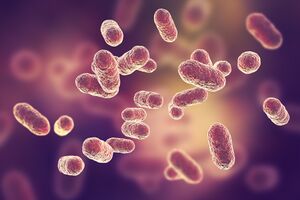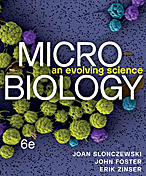Group B Strep and Pregnancy
Introduction

By Shawn Ruiz
Group B Strep (GBS), also known as Streptococcus agalactiae, is a Gram-positive, beta-hemolytic, catalase-negative, facultative anaerobe that is a normal component of the gastrointestinal and genitourinary tracts[1]. In fact, GBS colonizes the gastrointestinal and genitourinary tracts of up to 50% of healthy adults[2]. Most healthy adults who are colonized by GBS will not experience any symptoms or GBS-related infections. While the bacteria is usually harmless in healthy adults, it is a major cause of meningitis, pneumonia, and and sepsis in neonates[3]. Moreover, GBS is the leading infectious cause of neonatal mortality and morbidity in the United States; between four and six percent of babies who develop GBS disease die[4][5]. GBS causes both early onset (<7 days old) and late onset (7-90 days old) infections in neonates[4]. The main risk factor for an early-onset GBS infection in a neonate is colonization of a birthing person's genital tract with Group B strep during labor[4]. About one in four pregnant individuals carry GBS in their body[5]. If the bacteria is present in a pregnant person, it can be directly transferred to their baby in a multitude of ways. For example, GBS can travel from the vagina into the amniotic fluid where the baby can ingest it and/or the baby can come into contact with the bacteria as they make their way down the birth canal[3]. In the early 1990s, the early GBS infection rate was 1.7 cases per 1,000 births[3]. In an effort to decrease this infection rate, the American Congress of Obstetricians and Gynecologists and the American Academy of Pediatrics recommended screening pregnant individuals for GBS[3]. As a result, it is now common practice to screen pregnant individuals for GBS at some point between 35 and 37 weeks of pregnancy[5]. Pregnant people who test positive for GBS are treated with intravenous antibiotics during labor[5]. Penicillin and ampicillin are the recommended antibiotics for intrapartum GBS prophylaxis[6].
A citation code consists of a hyperlinked reference within "ref" begin and end codes.
To repeat the citation for other statements, the reference needs to have a names: "<ref name=aa>"
The repeated citation works like this, with a back slash.[1]
Section 1
Include some current research, with at least one figure showing data.
Every point of information REQUIRES CITATION using the citation tool shown above.
Section 2
Include some current research, with at least one figure showing data.
Section 3
Include some current research, with at least one figure showing data.
Section 4
Conclusion
References
Authored for BIOL 238 Microbiology, taught by Joan Slonczewski, 2021, Kenyon College.
